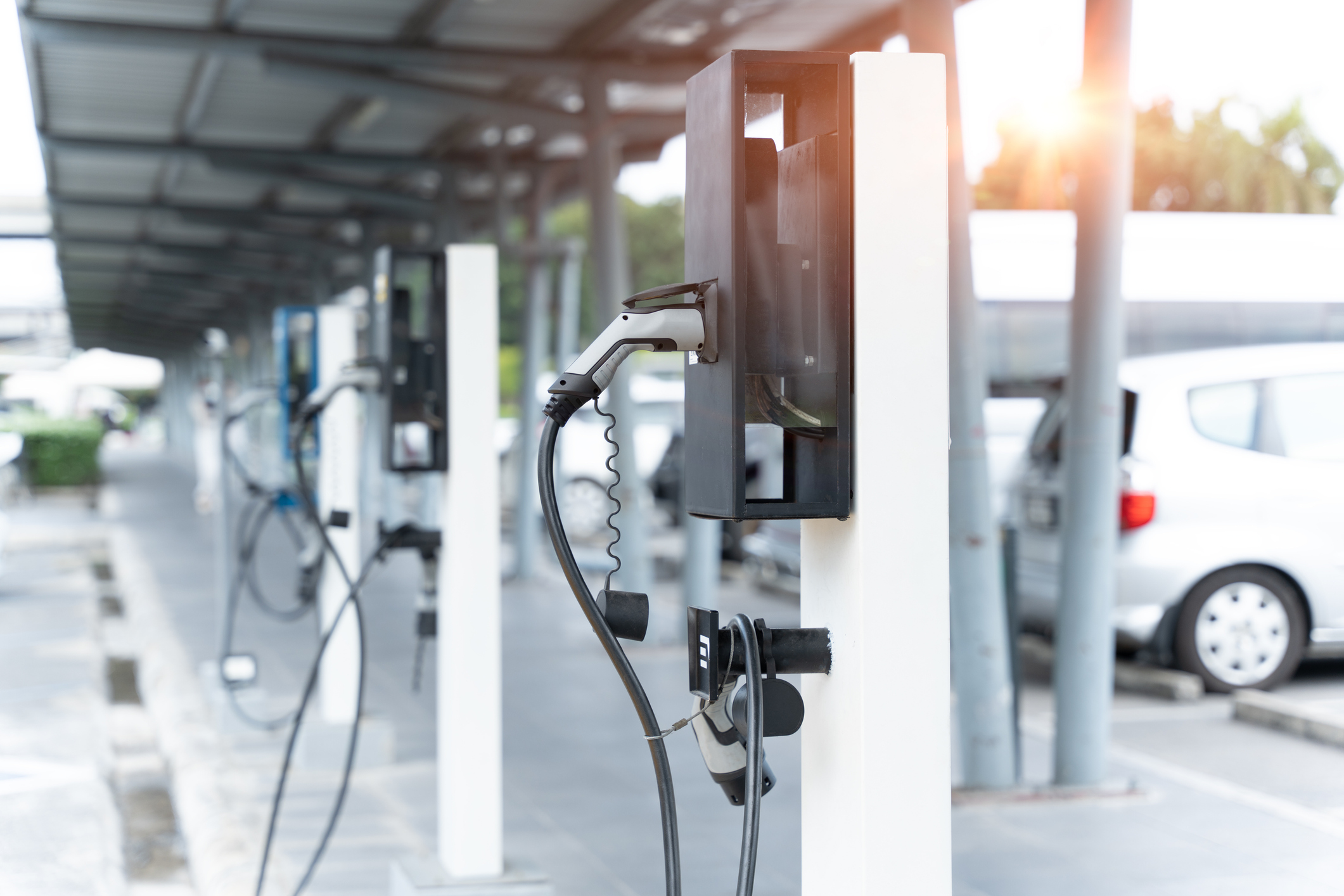The number of charging ports has tripled since 2018, lowering a major barrier to widespread EV adoption.
Canada’s electric vehicle market is about to get a boost with the federal zero-emission vehicle mandate—called the Electric Vehicle Availability Standard—announced this week. EVs will play a central role in driving down emissions in the transportation sector. And accessible public charging infrastructure is one of the key enablers that will help consumers make the switch.
So, how is Canada’s record on building out public charging stations? Luckily, the data shows that public charging infrastructure is growing at an accelerating rate. This Insight unpacks the rapid spread of charging infrastructure and the drivers behind this growth.
There are more EV plugs than ever in Canada
To give a snapshot of the progress so far, Figure 1 illustrates the number of operational Level 2 (L2) and DC fast charge (DCFC) ports in Canada over time, according to the Electric Charging and Alternative Fuelling Stations Locator. DCFC ports charge EVs the fastest, taking from 20 minutes to an hour for a full charge, while L2 chargers take up to eight hours. The locator only illustrates ports that are usable by the public, like the chargers at highway rest stops, rather than private chargers, like the ones found at personal residences.
As of October 2023, the total number of operational L2 and DCFC charging ports across the country has grown to about 26,500, up from 7,605 in 2018. That means that in just six years, Canada added almost 19,000 new charging ports, or 3.5 times more than in 2018.
This growth has only accelerated over the past year—40 per cent of the new chargers have come online in 2023, with an additional 7,542 charging ports added to the database this year.
At the sub-national level, the deployment of public charging infrastructure is uneven.
Quebec, Ontario and British Columbia have led Canada’s EV infrastructure build-out. This makes sense given that these provinces also represent the bulk of the country’s EV ownership—and two of them have ZEV mandates. The relatively well-developed infrastructure in these provinces suggests that a strong demand for EVs also strengthens the incentive to build chargers.
Alberta is also showing signs of accelerated charger deployment, becoming the fourth province to surpass 1,000 operational public chargers. Together, these four provinces account for 92 per cent of all public charging ports operating to date.
Other jurisdictions achieved notable milestones. Collectively, the territories recorded their first five charging ports installed in 2020, and since then have brought their total up to 33. On a per capita basis, Prince Edward Island leads the country with around 16 charging ports per 10,000 people (Figure 2).
A ZEV mandate should increase and even out Canada’s charging infrastructure
Three public policies are helping to accelerate the deployment of charging infrastructure.
Two of these policies—public subsidies and the Clean Fuel Regulations—directly sweeten the market’s incentive to build infrastructure.
When it comes to direct subsidies for charging infrastructure, there are several programs across the country, including at the federal level and in British Columbia, Prince Edward Island, and Quebec.
Country-wide, the Clean Fuel Regulations offer an additional incentive to build infrastructure because they allow firms that operate EV chargers to generate credits. Firms can then sell these credits to other firms or use them to comply with the regulations (since some firms that operate EV chargers also sell fossil fuels that are subject to the regulations).
The federal ZEV mandate is the third policy and it will help spur the deployment of EV infrastructure in three ways.
First, the ZEV mandate will give credits to vehicle manufacturers that build EV infrastructure, helping those manufacturers comply with the regulations. Second, since the mandate will increase the supply of EVs, it signals to firms that the demand for EV chargers across Canada will rise, making it more worthwhile to build infrastructure. Third, since the mandate will help even out EV supply across the country, it will indirectly incentivize the construction of chargers in some provinces that currently have less infrastructure.
Policies at the municipal level also play a key role in EV infrastructure. Canadian municipalities are making EV charging more accessible through a range of measures, including EV-ready building codes and rules that encourage the deployment of charging in the parking lots of multi-unit buildings.
Canada must keep building
Canada is rapidly expanding its EV charging network—but that expansion will need to accelerate even more to keep up with the growing demand for EVs.
According to research commissioned by the federal government, Canada must see at least 52,000 public charging ports built by 2025, and 195,000 by 2030. Otherwise, it risks facing a shortage of chargers for an ever-growing number of EVs.
The federal government has committed to building 84,500 publicly funded chargers by 2029. That’s a significant commitment to complement the build out done by the private sector.
The federal ZEV mandate can help supercharge this momentum by sending a clear signal that the market for EVs is only going to grow.
Arthur Zhang is a Research Associate at the Canadian Climate Institute.
